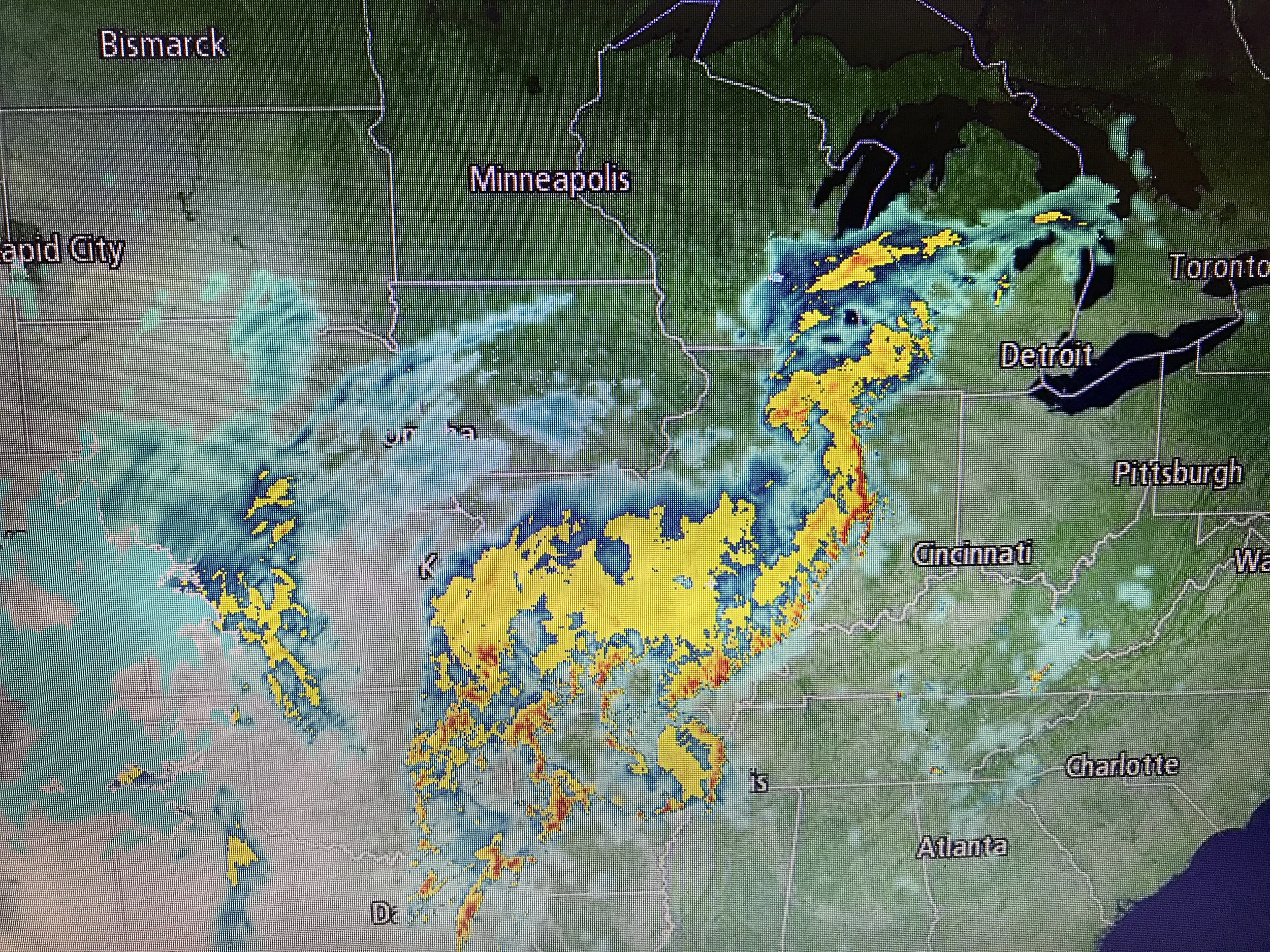

It is much more humid near the front over Iowa with dew points in the 60's and even a few oppressive lower 70's. Even warmer air from the western Dakotas and Montana has been flowing in on southeast winds overnight (see NWS Aviation Weather Center METAR map click on Minnesota). The dew points allowed for a morning low in the upper 40's, but crept up into the noticeable middle to upper 50's yesterday afternoon ( see NWS: 3-day of St.

Warmer air began to move back into Minnesota yesterday as highs topped out around 80 degrees in much of central Minnesota (see 4 PM Monday NWS WPC North American zoom-in map). Getting Warmer Yesterday with Some Late Night Storms in Eastern MN You can see this contrast in yesterday's high temperatures, with more 100-plus temperatures in Kansas than in the Desert Southwest, but highs only in the 60's and even 50's in central Alberta, Saskatchewan, and Manitoba (see 4 PM Monday NWS WPC North American zoom-in map). While we have spent most of this month in the middle so far, there are going to be some wild swings through the rest of this week. Cloud September high-low temperature chart) and the record low temperatures are below freezing (bottom of light blue). Cloud record high temperatures are still in the lower 90's (top of light red on the NWS Twin Cities St. The next three days are going to live up to the reputation that Minnesota fall (and spring) temperatures can do just about anything. If the radar animation of the last hours shows local thunderstorms or precipitation cells forming and disappearing in an irregular manner, then the forecast is not vey accurate.Tuesday, Septem4 :30 AM Bob Weisman Meteorology Professor Saint Cloud State University Atmospheric and Hydrologic Sciences Department September Weather About to Do Anything The forecast works very well when weather fronts or large organized precipitation structures are moving regularly, without disappearing or being created. Real weather is more complex than just the displacement of existing precipitation cells. Longer forecasts are not possible, as new precipitation cells are developing or existing ones are disappearing within a short time. This so called precipitation nowcast is the most accurate precipitation forecast possible but the forecast horizon is limited to about an hour. The rain/snow forecast is computed by estimating the movement of precipitation cells observed by radar and extrapolating this movement into the future. Minnesota: How accurate is the radar based forecast? Moreover, some countries do not operate a weather radar network, and in those countries satellite data is used to estimate rainfall, which is less accurate than a realtime weather radar. Note that lightning is not shown on the forecast, as it cannot be predicted.

Light blue indicates drizzle, blue a medium intensity, and red and yellow indicate very strong precipitation, usually associated with thunderstorms.Ĭurrent lightning strikes are marked with small orange dots on the map (Europe only). The different colours indicate the intensity of rainfall or snowfall. The radar map is updated every 5 minutes with a new radar observation. The weather radar ( Minnesota) shows where it is currently raining or snowing.


 0 kommentar(er)
0 kommentar(er)
